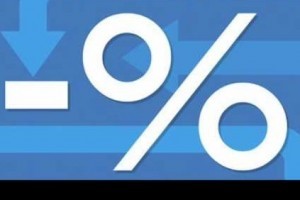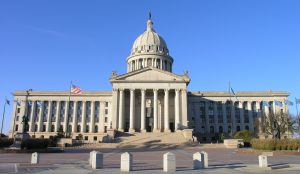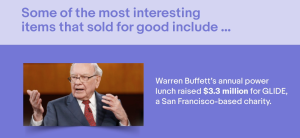U.S. Federal Reserve Chairwoman Janet Yellen testified before Congress that negative interest rates are not out of the question. “I wouldn’t take them off the table but we would have work to do to judge whether they would be workable here,” she said during testimony to the Senate Banking Committee.
Dan Busby, president of the Evangelical Council for Financial Accountability (ECFA), described negative interest rates as in the “imponderable” category on the potential negative impact on charities.
In December, the Fed raised its benchmark interest rate – the first time in nearly a decade – from almost zero to 0.4 percent. Despite a strong U.S. job market, a woeful start to the year for stocks – especially overseas – has raised concerns regarding an economic slowdown or worse.
“We had previously considered them [negative interest rates] and decided they would not work well to foster accommodation back in 2010. In light of the experience of European countries and others that have gone to negative rates, we’re taking a look at them again because we would want to be prepared in the event that we needed to add accommodation,” she said. “We haven’t finished that evaluation. We need to consider the U.S. constitutional context, whether they would work well here; it’s not automatic,” Yellen said.
The European Central Bank (ECB) lowered its bank lending rate below zero in 2014 to encourage banks to put cash to use and spur economic activity. Denmark, Sweden and Switzerland have since joined the “Less Than Zero Club.” The Bank of Japan in January went below zero and the next month, Sweden’s central bank went lower, dropping from -0.35 percent to -0.5 percent.
Busby said negative rates could lead to loss of donor confidence in the banking system, triggering a reduction in giving. Even before it reaches that point, nonprofits would be faced with increasing complexity around their cash management process. “This would be especially burdensome for smaller nonprofits that might lack the sophistication to deal with these issues,” Busby said.
Even though going from a 1.5 percent return on investments to zero is the same spread as going from zero to -1.5 percent, Busby said there would be a “huge psychological difference” in paying to have funds on deposit instead of just receiving zero return.
To reduce cash balances, nonprofit financial managers likely would increase their efforts to minimize the amount they would pay in negative interest rates and, in some cases, consider more risky investments. “It would be a time for governing boards of nonprofits to be sure there is adherence to investment policies and give careful study before significant changes are made in investment policies, in an effort to mitigate the impact of negative interest rates,” Busby said.
Nonprofits also might be tempted to move their cash to risky investment alternatives, possibly resulting in losses more significant than paying negative interest rates, Busby said.
Fundamentally, a shift toward slightly negative interest rates shouldn’t be much different from other decreases in interest rates in that it would create an incentive to shift the balance of an endowment’s portfolio away from “safe” investments toward things that can provide a greater return, according to Brian Mittendorf, Ph.D., professor of accounting at The Ohio State University’s Fisher College of Business and nonprofit finance expert.
“In this case, it would just be a bit more extreme since there would be an explicit punishment for keeping some of the portfolio in cash or cash equivalents,” he said.
The reason for a rate cut would be boosting incentives for spending, as the traditional tradeoff for consumers and businesses is between spending and saving. For organizations with endowments, however, such a tradeoff does not exist since the funds will be saved regardless. The tradeoff is instead between different types of investments, said Mittendorf. The net effect for these organizations could actually be reduced spending: with less attractive investment options comes lower returns and the need to revisit spending policies.
How nonprofit managers react to a move toward negative interest rates would depend on the existing asset base. “For those with large endowments and reliance upon the spending on them for programs, I’d suspect they are re-evaluating their defensive positions to weather the uncertainty in the market while also keeping a steady eye towards long-term returns,” said Bob Mims, controller and director of investments at Memphis, Tenn.-based Ducks Unlimited.
“This will manifest in the form of well thought-out moves in asset allocations on endowments to protect downside risk while holding positions to continue long-term returns. For nonprofits that are leveraged, it creates opportunities to review assets and debt in a way that could improve financial strength,” he said.
“A key component to looking at the external factors they can’t control is for nonprofits to have a long-term view not only of their mission but also of their balance sheet in terms of operating within their means that can weather wild interest rate fluctuations beyond their control,” Mims said.
A recent survey of 54 endowments and foundations ranging in assets from $50 million to $1 billion indicated that a slowdown in global growth was by far the primary concern, well ahead of rising interest rates, potential overseas conflicts or Fed “tapering.” Almost half of those surveyed in January expect interest rates to increase by less than 0.5 percent and almost as many expect rates to rise by 0.5 to 1 percent.
Boston-based NEPC, which conducted the survey, has some 300 clients with combined assets of more than $900 billion. The survey included business officers of universities, foundations and other nonprofits.
Jason Pride pegged negative interest rates as “a low probability at this point in time.”
The fact that Yellen mentioned the Fed is willing to entertain negative interest rates shouldn’t really be news, according to Pride, director of investment strategy in the Philadelphia, Pa. office of Glenmede. The investment management firm, which split from Pew Charitable Trusts in 2003, manages about $30 billion in assets, almost one-third of which is institutional, such as endowments and foundations.
“It’s just an admission that they’re open minded,” he said. “They should be willing to entertain anything they can possibly do.”
Negative interest rates lower costs for short-term borrowing and also generally force money from investors out to the “risk spectrum,” Pride said. “If there’s a prospect of being charged for holding cash in short-term investments, one would be more likely to be pushed to something that could incrementally get a positive return,” he said.
“The thought process on central bankers’ part is they want to incentivize cash to get out of cash,” Pride said. “Us having this discussion is actually what they want to have happen: Create pressure to…getting cash out of the mattress sort of,” he said.
Organizations won’t take their cash that far out of the “risk spectrum … They’re not going to go out and get emerging market equities,” he said. “Maybe they’re in a AAA corporate-rated bond fund with a five-year duration collecting 1 percent a year, but you wouldn’t be charged 10 basis points. That’s exactly the effect that central bankers that put forward negative interest rates want to have,” Pride said.
“If you get cash to invest in corporate bonds, you either relieve pressure on corporate bonds, or the next purchaser of bonds might go AA instead of AAA,” he said. “It incrementally pushes people out the curve and lowers the cost of borrowing for the entire base.”
Pride likened the Fed’s actions to pushing a spring against a wall. The closer the spring gets to the wall, the harder it is to push. Going from 5 percent to zero percent had a big effect but going from 0.25 percent on short-term to 0.1 percent has a much smaller impact, he said. “Getting money to move in that way is hard.”
Since interest rates were slashed in response to the Great Recession in 2008, projected returns for a balanced portfolio have had more difficulty returning 5 percent, Pride said. “It used to be that a balanced portfolio could earn 6, 7 percent on average pretty easily, just a normal return for a fairly balanced, diversified portfolio,” he said.
The more stimulus the Fed applies, the lower long-term expected returns, propping up asset prices now and reducing speculative returns for the next 20 years. “It creates a conundrum for foundations that gets you very close to that 5-percent line,” Pride said, referring to the requirement of foundations to distribute 5 percent. “A lot of that is dragged down by the fixed income side of the equation, where yields are slow,” Pride said. “That’s something foundations will be grappling with. The longer lower interest rate environment, the more that interest rates get anchored lower, the more foundations will have to be dealing with this idea that their returns are very close to that 5-percent mark,” he said.
When a good portion of a portfolio is made up of 10-year treasuries at 1.5 percent, “it makes it more challenging to reach that 5 percent payout,” Pride said.
Private foundation leaders might think about ways to increase the size of the foundation, by either gifting more money or raising more money into it, finding ways to prop up its value. Others might just accept the idea that for some horizon, they do risk having the foundation’s value fall a little. For others, they could very well make the decision to allow themselves to take more risk.
Foundations might minimize their cash exposure and raise their risk asset exposure up into classes that carry some form of market risk, like equities or real estate but also raise exposure to longer-duration fixed income assets, Pride said.
In the NEPC survey, 30 percent of respondents said they are not planning or already made adjustments to fixed income exposure while about 22 percent said they’re looking at “unconstrained strategies.” Another 13 percent are adding private debt strategies.
“We’ll see if negative interest rates actually push banks to charge on small holdings of cash in a meaningful way,” Pride said. It could depend on an organization’s asset level, he added, suggesting that a tiered system of charging fees higher than a certain level but not below a set floor.
Small charities where cash is needed for working capital or near-term distribution would probably fall below any fee-inducing level. “Anything they keep over a dramatic amount, then they’re not properly thinking it through” if the organization doesn’t need the cash for more than six months.
“To some degree if banks do it I think they will probably tier the charging so that small amounts don’t feel the pressure, large amounts do,” Pride said. “The idea of a tiered system is for any endowment, charity or foundation, you’d manage yourself to that level,” he said. “Have enough cash to not having working capital stresses to pay for what you have to pay for. Shift as much of the excess cash otherwise just sitting there mainly because maybe because they’re lazy or it’s the easiest thing to do, then shift to something that wouldn’t have that impact.”
Yet it’s still questionable what decision will be made for the U.S. since it would raise a number of other questions, such as whether banks would be allowed to charge fees for holding cash or let negative rates impact the profitability of banks, which could undermine their stability, he said.
“There are questions about negative rates that have to be dealt with in process of going there,” Pride said. What happens at bank level has to be decided first, then act to that. E











